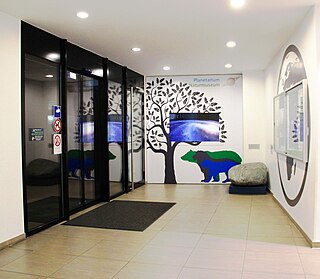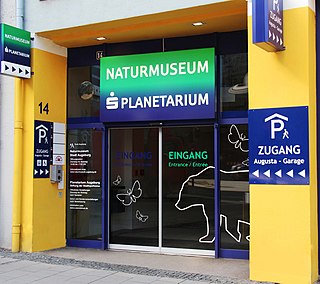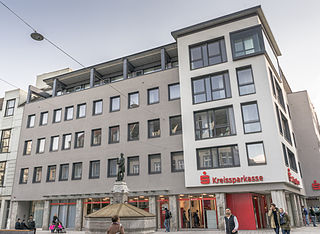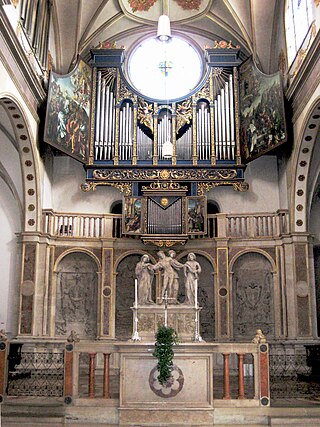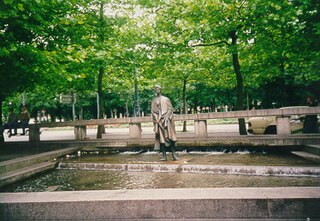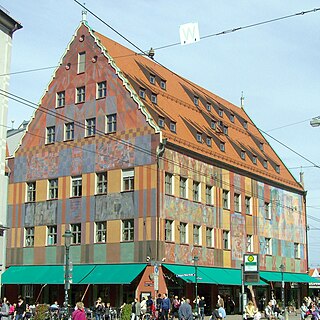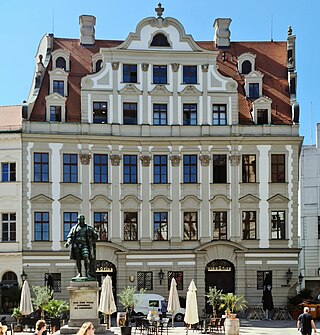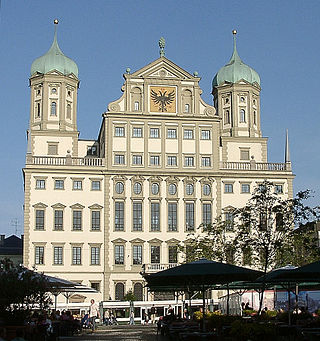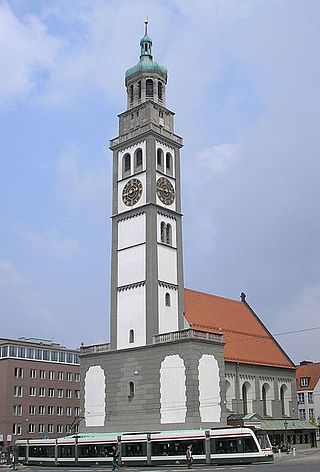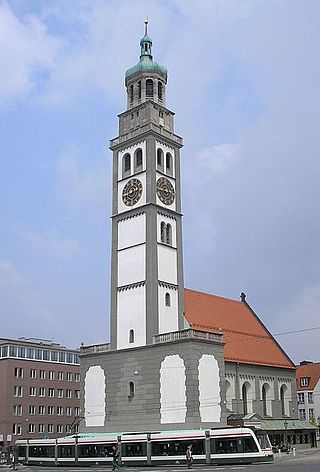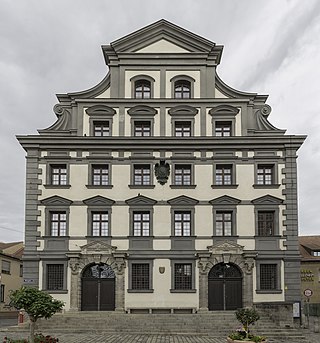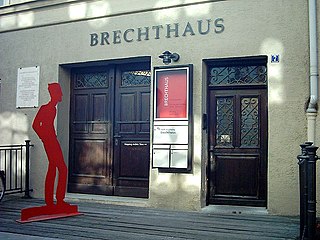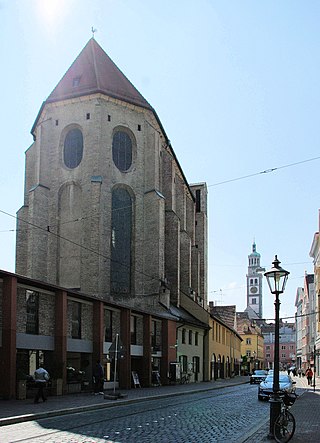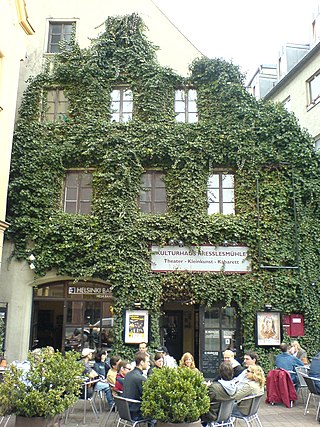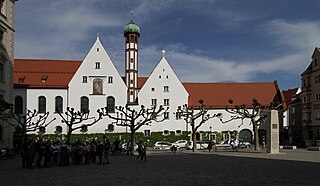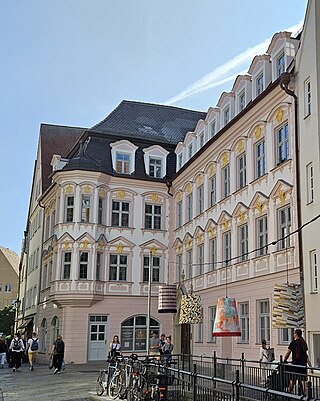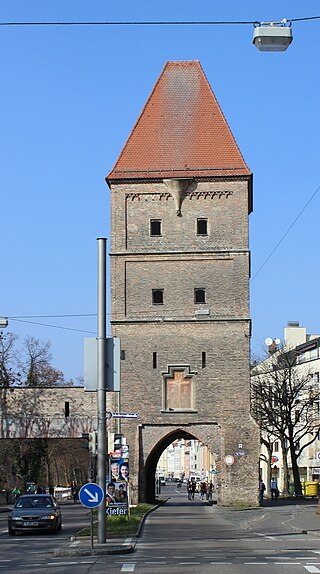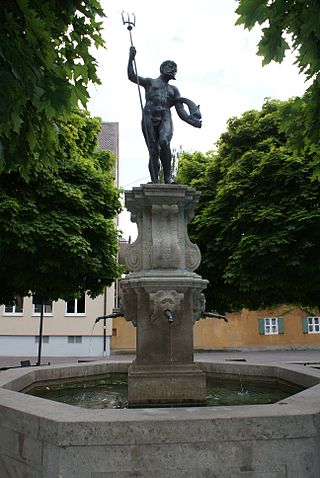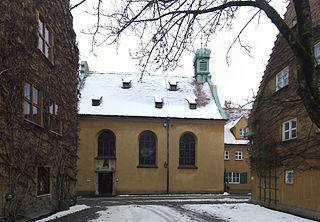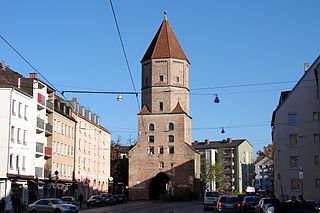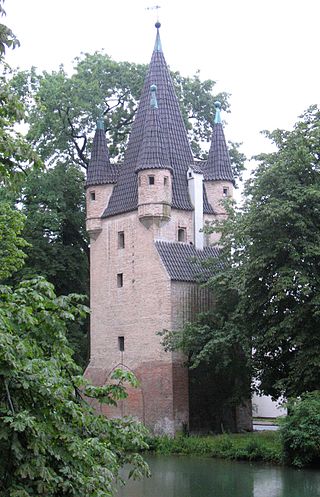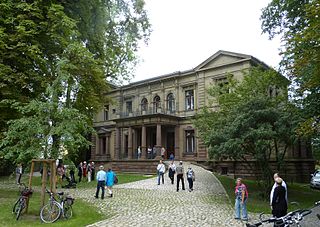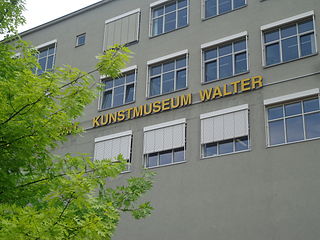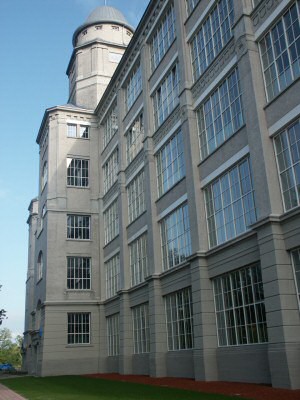Self-guided Sightseeing Tour #2 in Augsburg, Germany
Legend
Guided Free Walking Tours
Book free guided walking tours in Augsburg.
Guided Sightseeing Tours
Book guided sightseeing tours and activities in Augsburg.
Tour Facts
6.5 km
93 m
Experience Augsburg in Germany in a whole new way with our free self-guided sightseeing tour. This site not only offers you practical information and insider tips, but also a rich variety of activities and sights you shouldn't miss. Whether you love art and culture, want to explore historical sites or simply want to experience the vibrant atmosphere of a lively city - you'll find everything you need for your personal adventure here.
Activities in AugsburgIndividual Sights in AugsburgSight 1: Sparkassen-Planetarium Augsburg
The Sparkassen Planetarium is a planetarium in Augsburg's city centre, which was established in 1985 on the occasion of the 2000th anniversary of the city of Augsburg as a foundation of the Stadtsparkasse and began operations in 1989.
Sight 2: Naturmuseum
The Augsburg Natural History Museum is operated by the city of Augsburg and is located in the "Augusta Arcaden" in the northern old town. The focus of the exhibitions from the fields of geology, mineralogy, botany, zoology and paleontology is the molasse, a soil layer consisting of weathered debris that makes up the subsoil of a large part of the Alpine foothills and southern Germany. The Augsburg Museum of Natural History is the only one in Germany that specialises in this area.
Sight 3: Goldschmiedebrunnen
Martin-Luther-Platz is a square in Augsburg's city centre. Until 1933, it was called Annaplatz because of the nearby church of St. Anna.
Sight 4: Sankt Anna
The Church of St. Anne is a medieval Evangelical Lutheran parish church in Augsburg, Germany. Originally built in 1321, it has undergone several significant renovations since, and is notable for its elaborate interior decoration, and its role in Protestant-Catholic relations in Germany.
Sight 5: Manzú fountain
The Manzù Fountain is a publicly accessible fountain on the edge of Königsplatz in the city center of Augsburg.
Sight 6: Zeughaus
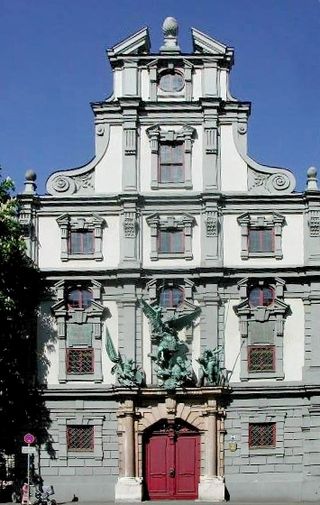
The armoury in the old town of Augsburg was built between 1602 and 1607 by Elias Holl. The designs for the façade – which, depending on the author, can be assigned either to the Renaissance or already to the Baroque, but most accurately to the transitional style of Mannerism – were created by Joseph Heintz.
Sight 7: St. Moritz
Get Ticket*St. Moritz in Augsburg is a Roman Catholic parish church and former collegiate church of the collegiate monastery of St. Moritz, which was dissolved as a result of secularization. Originally built as a burial place in memory of Bishop Bruno, the brother of Emperor Henry II the Saint, and expanded and redesigned several times over the centuries, it was rebuilt in a simplified form after its destruction in the Second World War from 1946 to 1950. It is protected as an architectural monument.
Sight 8: Weberhaus
The Weavers' House is the former guild house of the weavers in Augsburg. The historicizing building, erected in 1913, replaced a late Gothic predecessor building on about the same site. It is located in the city center at Moritzplatz. The monument is listed under the file number D-7-61-000-727 in the Bavarian List of Monuments.
Sight 9: Köpfhaus
The Köpfhaus is a three-storey corner house in the city centre of Augsburg, which is a listed building. It is located at Fuggerplatz 9 and consists of various houses that have been united into one building over the centuries. The oldest parts of the Köpfhaus date back to the 14th century.
Sight 10: Maximilianmuseum
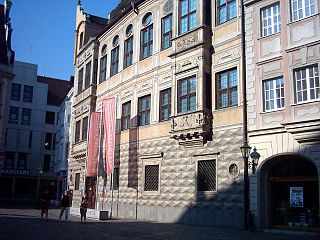
The Maximilian Museum is a large, public museum housed in a palatial building erected in 1546 in Augsburg, Germany. It houses a notable collection of decorative arts. Augsburg was the leading German center of sculpture, painting, and, especially, of fine work in gold in silver from the late Middle Ages until the modern period.
Sight 11: Fugger-Denkmal
In the list of monuments in the city centre, St. Ulrich–Cathedral, the monuments in the Augsburg district of Innenstadt, St. Ulrich–Dom in the Planning area inner city (I) listed. There is also a collection of pictures of these monuments.
Wikipedia: Liste der Baudenkmäler in Augsburg-Innenstadt, St. Ulrich–Dom (DE)
Sight 12: Rathaus
Augsburg Town Hall is the administrative centre of Augsburg, Bavaria, Germany, and one of the most significant secular buildings of the Renaissance style north of the Alps. It was designed and built by Elias Holl, Stadtbaumeister, in 1615–1624. Due to its historic and cultural importance, it is protected by the Hague Convention for the Protection of Cultural Property in the Event of Armed Conflict.
Sight 13: Goldener Saal
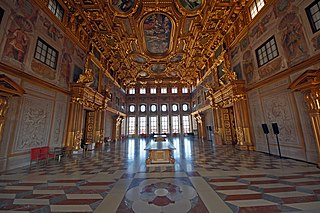
The Goldener Saal is a ceremonial room in the 3rd floor of Augsburg Town Hall, which is famous for its ceiling paintings, murals, and golden wall decoration. It was finished in 1643 and is one of the most important cultural monuments of the late Renaissance.
Sight 14: St. Peter am Perlach
St. Peter am Perlach or Perlach-Church is a romanesque Catholic church in the center of Augsburg (Bavaria). The tower of the church, the Perlachturm, is together with the Augsburg Town Hall the landmark of Augsburg.
Sight 15: Perlachturm
The 70-metre-tall Perlachturm is a belltower in front of the church of St. Peter am Perlach in the central district of Augsburg, Germany. It originated as a watchtower in the 10th century. The existing Renaissance structure was built in the 1610s by Elias Holl, who also designed the neighbouring Town Hall.
Sight 16: Stadtmetzg
The Stadtmetzg of Augsburg is a historic building in the style of the late Renaissance. It was built between 1606 and 1609 by Elias Holl and is located at the lower end of the Perlachberg. The listed building now belongs to the Jakobervorstadt-Nord district, even though historically it is not located in Jakobervorstadt, but in the Lechviertel. The town butcher's shop, which served as a butcher's shop for centuries, is now used as an administrative building.
Sight 17: Brechthaus
The Brechthaus is the birthplace of the poet, playwright and writer Bertolt Brecht in the old town of Augsburg and is now a museum and memorial for him.
Sight 18: Barfüßerkirche
The Protestant Barfüßerkirche in the old town of Augsburg was built in the 13th century by the Franciscans (Barfüßern). After its extensive destruction in the Second World War, it was rebuilt in parts in a simplified way. The towerless church building, which still consists mainly of the former choir, rises out of the tangle of narrow streets and simple gabled houses and appears straight and accurate in its strict form.
Sight 19: Georgsbrunnen
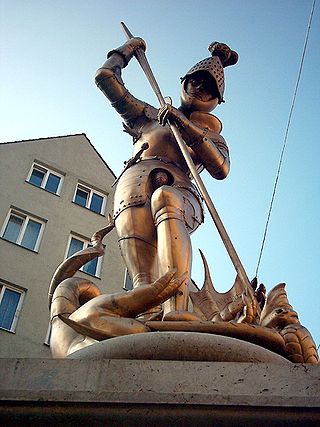
The Georgsbrunnen fountain in Augsburg is dedicated to Saint George. Like so many fountains in the city's history, it has often changed its location. Since 1993, it has been located opposite the Stadtmetzg at the lower end of the Perlachberg.
Sight 20: Kulturhaus Kresslesmühle
The Kulturhaus Kresslesmühle is a municipal cabaret theatre with an educational centre and gastronomy in Augsburg's Lechviertel. The building, which is registered as an architectural monument in the Bavarian List of Monuments, is a former water mill.
Sight 21: Kloster der Franziskanerinnen von Maria Stern
The Convent of the Franciscan Sisters of Maria Stern is a listed convent of Franciscan Tertiary Sisters, the Franciscan Sisters of Maria Stern, in the old town of Augsburg.
Wikipedia: Kloster der Franziskanerinnen von Maria Stern (DE), Website
Sight 22: Gignoux-Haus
The Gignoux House in the Lechviertel of Augsburg is a historic building in the Rococo style and was built in 1764/65 by Leonhard Christian Mayer. Until July 2010, it housed the Komödie, a venue of the Augsburg Theatre.
Sight 23: Vogeltor
The Vogeltor in Augsburg is part of the former city wall and used to serve as an entrance to the Jakobervorstadt, which is located in the area of today's Augsburg-Innenstadt planning area.
Sight 24: Neptunbrunnen
The Neptune Fountain in Augsburg is dedicated to the Roman god Neptune and has an eventful history. It is Augsburg's oldest fountain figure, as it is assumed that the figure was created around 1518. Other sources assume that it was manufactured in 1536/1537. It was made of bronze and probably designed by the Augsburg sculptor Hans Daucher, other sources point to the sculptor Sebastian Löscher.
Sight 25: Fuggereimuseum
The Fuggerei Museum deals with the history of the Augsburg Fuggerei. It was founded in 1957 and is located at Mittlere Gasse 13 and 14. In addition to a permanent exhibition, it houses a historic museum apartment that shows life and living in the Fuggerei at the time of the early 19th century, as well as a modern show apartment. Since 2008, a World War II bunker has also been attached to the museum.
Sight 26: Markuskirche
St. Mark's Church, also known as St. Mark's Chapel, in the Fuggerei in Augsburg was built from 1580 to 1582 and rebuilt until 1950 after its destruction in the Second World War. As an architectural monument, it is entered in the Bavarian List of Monuments.
Sight 27: Fuggerei
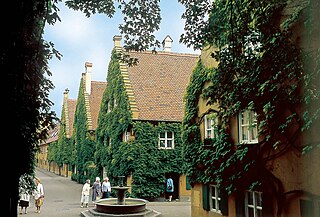
The Fuggerei is the world's oldest public housing complex still in use. It is a walled enclave within the city of Augsburg, Bavaria. It takes its name from the Fugger family and was founded in 1516 by Jakob Fugger the Younger as a place where the needy citizens of Augsburg could be housed. By 1523, 52 houses had been built, and in the coming years the area expanded with various streets, small squares and a church. The gates were locked at night, so the Fuggerei was, in its own right, very similar to a small independent medieval town. It is still inhabited today, affording it the status of being the oldest public housing project in the world.
Sight 28: Jakobsbrunnen
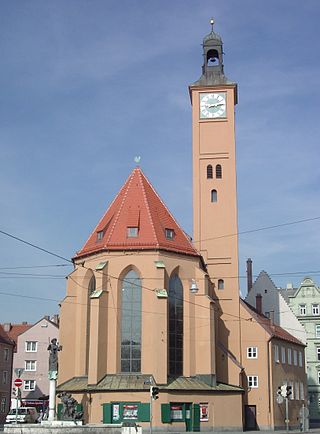
The Church of St. Jakob in Augsburg, also known as Jakobskirche, is a Protestant church in Augsburg, Germany. It is an architectural monument in the Augsburg-Jakobervorstadt-Nord district and the historical centre of Augsburg's Jakobervorstadt. The church is an important stop on the Augsburg Way of St. James, the St. James pilgrimage route in Bavarian Swabia. The St. James Pilgrimage Community Augsburg maintains the signage of the Way of St. James from Oettingen via Augsburg to Lindau.
Sight 29: Jakobertor
The Jakobertor from the 14th century is one of five still existing Augsburg city gates and forms the eastern end of the Jakobervorstadt. It was originally part of the city wall. Only a small section of this has been reconstructed to the north, so that the gate is largely free.
Sight 30: Fünfgratturm
The Fünfgratturm is a fortified tower in Augsburg, Germany. It was built in 1454 as part of Augsburg's eastern city fortifications around the Jakobervorstadt. It has been isolated since the demolition of this part of the city wall in 1867/68. It was built especially for the so-called Scharwächter – patrols that ensured that the people of Augsburg could sleep peacefully. In 1948 and 1973/74 the tower was renovated. It is a listed building.
Sight 31: Haag-Villa
The Villa Haag, also known as the Haag Villa, is the former residential and office building of the Augsburg manufacturer Johannes Haag (1819–1887). The representative director's villa, built in the neo-Renaissance style, is an architectural monument in the Am Schäfflerbach district and has the address Johannes-Haag-Straße 14 in Augsburg's textile district.
Sight 32: Sensemble Theater
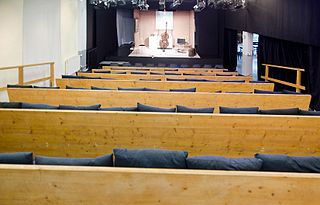
The Sensemble Theater is a theater in Augsburg, Germany. Its original spelling is S'ensemble Theater. Since the 2011/2012 season, the theatre has been using the spelling without the apostrophe. The clubs have also partially adopted this changed spelling.
Sight 33: Kunstmuseum Walter
The Kunstmuseum Walter is a privately run museum in Augsburg, Germany. It is located in the Glass Palace and shows modern and contemporary art. The owner of the collection and at the same time the namesake of the museum, which opened in 2002, is the building contractor Ignaz Walter, who died in 2023.
Sight 34: Glaspalast
The Glass Palace is an industrial monument in Augsburg, which was put into operation in 1910 as the fourth and final expansion stage of the Mechanical Cotton Spinning and Weaving Mill Augsburg (SWA). It is located on Otto-Lindenmeyer-Straße, named after SWA's first major company manager. Production ended in 1988 with the bankruptcy of the company. The building was temporarily owned by the city of Augsburg and was sold to Ignaz Walter in 1999. As a refinancing of the renovation, the demolition of the mill's weaving shed halls was permitted. This new development area is now called Aumühle, which means that the former factory name lives on.
Share
How likely are you to recommend us?
Disclaimer Please be aware of your surroundings and do not enter private property. We are not liable for any damages that occur during the tours.
GPX-Download For navigation apps and GPS devices you can download the tour as a GPX file.
